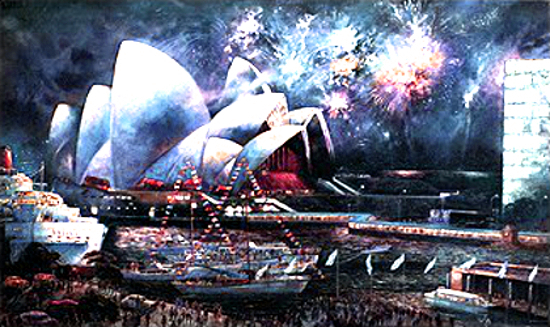Project Description
1948-1968
Possibly nothing in Sydney’s history has provoked so much controversy and bitterness, for so long, as the building of the Sydney Opera House. During its long construction, Australians were divided on whether it was the biggest “white elephant” in history or the greatest architecture achievement of this century. Possibly nothing else can boast of having such a ridiculously melodramatic biography.
The Opera House was completed in 1973, at a cost of about $102 million. It was the culmination of the 20 years of this period’s hoping, planning and striving towards the completion of a cultural complex unique in the history of the performing arts in Australia. The country had acquired a priceless heritage and a new era in the cultural life of Sydney.
H.R.H. Queen Elizabeth II’s appearance in Sydney to open the Opera House was her first as “Queen of Australia”. The official opening ceremony took place outdoors in the Opera House forecourt on the afternoon of 20th October, 1973. Flags, bunting and nylon streamers were attached from tugs in the Harbour to the peaks of the Opera House’s roofs. Over 15,000 official guests had been invited. Australians flocked to the Botanical Gardens and Bennelong Point in their thousands to pack the foreshores.
The Oriana can be seen docked at the Overseas Shipping Terminal in Sydney Cove, on the left of the painting. And on the right is a sleek baby skyscraper, Unilever House, on the eastern side of Sydney Cove, about 180 metres from the front steps of the Opera House.
After the opening, a flotilla of decorated vessels sounded whistles and horns as 60,000 balloons shot skywards. Pigeons were released, F-111 aircraft zoomed overhead and helicopters darted under the Sydney Harbour Bridge. To continue the colourful celebration into the evening, the Queen and the Duke of Edinburgh returned that for a great fireworks display, ignited from the podium. With the fireworks lighting up the sky in a blaze of brilliant colours, streaky patterns reflected off the glistening flanks of the creamy “sail” shells. It was truly an effect of unprecedented splendour. This preceded the “Royal Opening Concert” a special performance of Beethoven’s Choral Symphony, held in the Concert Hall and performed by the Sydney Symphony Orchestra accompanied by the Sydney Philharmonic Choir.
The Opera House soon became the city’s central attraction during festive occasions. Indeed, it became the focus for carnival processions, protest marches and starting and finishing points for races of all types.
An average of about nine events per day are presented inside the Opera House’s three main halls. The major hall, the Concert Hall, is used mainly for symphony concerts. but is also utilised extensively for other concerts and shows (such as pop and jazz concerts, conventions, films and fashion parades). The Opera Theatre is used for opera, ballet and large drama productions, and the Drama Theatre is used for drama, ballet and small-scale opera. These halls are hired out mainly to the Australian Opera Commission and the ABC.
The public quickly forgot the struggle and controversy which had dragged on during the Opera House’s long construction. From its completion and glamourous opening day, it became “the jewel of Sydney Harbour”. More than just a performing arts centre, it became a monument to our modern era. If there is a symbol of modern Australia, it is without question the Sydney Opera House – “the pearl in the centre of the urban oyster”.
